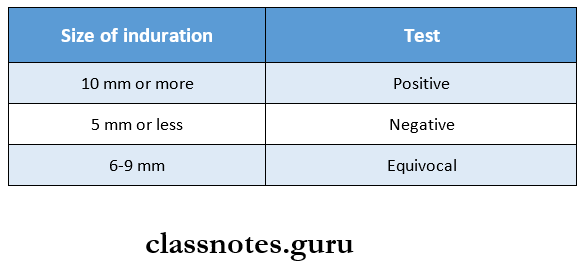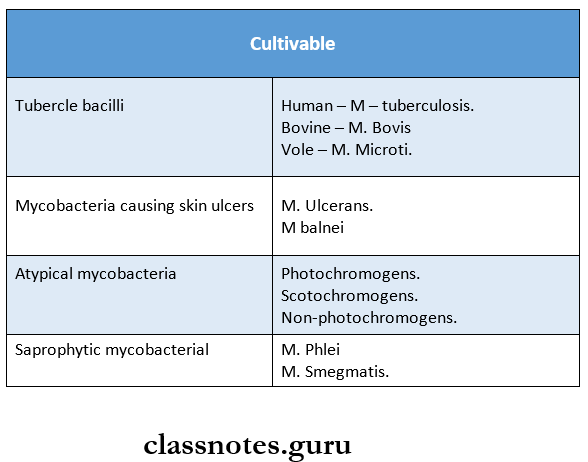Mycobacterium Tuberculosis Long Essay
Question 1. Describe morphology, cultural characteristics, pathogenicity, and laboratory diagnosis of mycobacterium tuberculosis.
Answer:
Mycobacterium Tuberculosis Morphology:
- M. Tuberculosis is weakly gram-positive, strongly acid-fast bacilli.
- They are non-sporing, non-capsulated and non-motile.
- Shape-slender, straight or slightly curved bacilli with rounded ends.
- Size: 1 – 4 0m – 0.2 – 0.8 0m.
- Arrangement – singly, in pairs, or in small clumps.
Mycobacterium Tuberculosis Cultural characteristics:
- M. Tuberculosis is an obligate aerobe.
- It grows slowly at a temperature range of 30 – 40°C and pH – 6.4 – 7.0.
Read And Learn More: Microbiology Question and Answers
1. Lowenstein – Jensen media.
- It consists of
- Beaten eggs – Acts as a solidifying agent.
- Asparagine.
- Mineral salts.
- Malachite green – Inhibits the growth of another organism.
- Glycerol – Improves growth.
- Colonies are dry, rough, buff-colored, raised with a wrinkled surface.
2. Liquid media.
- Bacilli grow as a surface pellicle.
- Virulent strains grow as serpentine cords.
- Avirulent strains grow in a dispersed fashion.
Mycobacterium Tuberculosis Pathogenicity:
- Route of infection – inhalation, ingestion, and skin inoculation.
- The tubercle is a characteristic lesion.
- It is an avascular granuloma composed of a central zone containing giant cells with or without caseation necrosis surrounded by epitheloid cells and a peripheral zone of lymphocytes and fibroblasts.
Mycobacterium tuberculosis characteristics
Mycobacterium Tuberculosis Types:
1. Exudative.
- Exudative is an acute inflammatory reaction with an accumulation of edema fluids, leucocytes, and monocytes.
2. Productive.
- Productive is predominantly cellular and composed of tubercles.
- Tuberculosis can also be classified as.
1. Primary Infection.
- Occurs in young children.
- Leads to primary complex.
- Consists of Gohn’s focus.
- Hilar lymph nodes are involved.
2. Postprimaiy Infection.
- Occurs in adults.
- It heals by resorption, fibrosis, and occasionally
Lab Diagnosis of Mycobacterium Tuberculosis
1. Specimen Collection

2. Direct Microscopy
- Ziehl Neelsen staining shows acid-fast, bright red tubercle bacilli.
3. Culture.
- Lowenstein – Jension media is used.
4. Animal Inoculation.
- 0.5 ml of the concentrated specimen is inoculated IM into the thigh of two healthy guinea pigs.
- Animals are weighed before inoculation and then at weekly intervals.
- Tested after 3-4 weeks.
- Auto spy shows a caseous lesion.
5. Molecular Method – Includes polymerase chain reaction.
6. Serological Test – Includes.
- ELSI test
- Radioimmunoassay.
- Latex agglutination assay.
Mycobacterium tuberculosis gram stain
Mycobacterium Tuberculosis Short Essays
Question 1. Mantoux test.
Answer:
Mantoux Test is a routinely used method for tuberculin testing.
Mantoux Test Method:
- 0.1 ml of purified protein derivative, PPD containing 5 TU [tuberculin unit] is injected intradermally into the flexor aspect of the forearm.
- It is given between layers of the skin.
- The site is examined after 48 – 72 hours for induration.
Mantoux Test Result:

Mantoux Test Significance:

Mycobacterium tuberculosis structure
Question 2. BCG vaccine.
Answer:
- BCG vaccine was prepared by Calmette and Guerin.
- It is a live attenuated and freeze-dried vaccine.
BCG Vaccine Dose And Administration:
- It is available as a fresh liquid vaccine or in the form of freeze-dried vaccine.
- It is given intradermally in a dose of 0.1 ml soon after birth.
BCG Vaccine Immune Response:
- Induces a self-limited infection with multiplication and dissemination of the bacillus in different organs and production of small tubercles.
- It gives rise to delayed hypersensitivity.
BCG Vaccine Complications:
- Local abscess, indolent ulcer, keloid, confluent lesion, lipid lesion.
- Regional enlargement and suppuration of draining lymph nodes.
- Systemic fever, mediastinal adenitis.
- Erythema nodosum.
BCG Vaccine Contraindications:
- In patients with AIDS, Eczema, pertussis, measles, and patients on steroids.
Role of BCG:
- Makes the disease milder.
- Prevents serious forms of disease.
Mycobacterium tuberculosis pathogenesis
Mycobacterium Tuberculosis Short Question And Answers
Question 1. Classification of mycobacteria.
Answer:
Classification Of Mycobacteria Is As follows:
1. Cultivable:

Mycobacterium tuberculosis infection
2. Non-cultivable.
- M.Leprae
